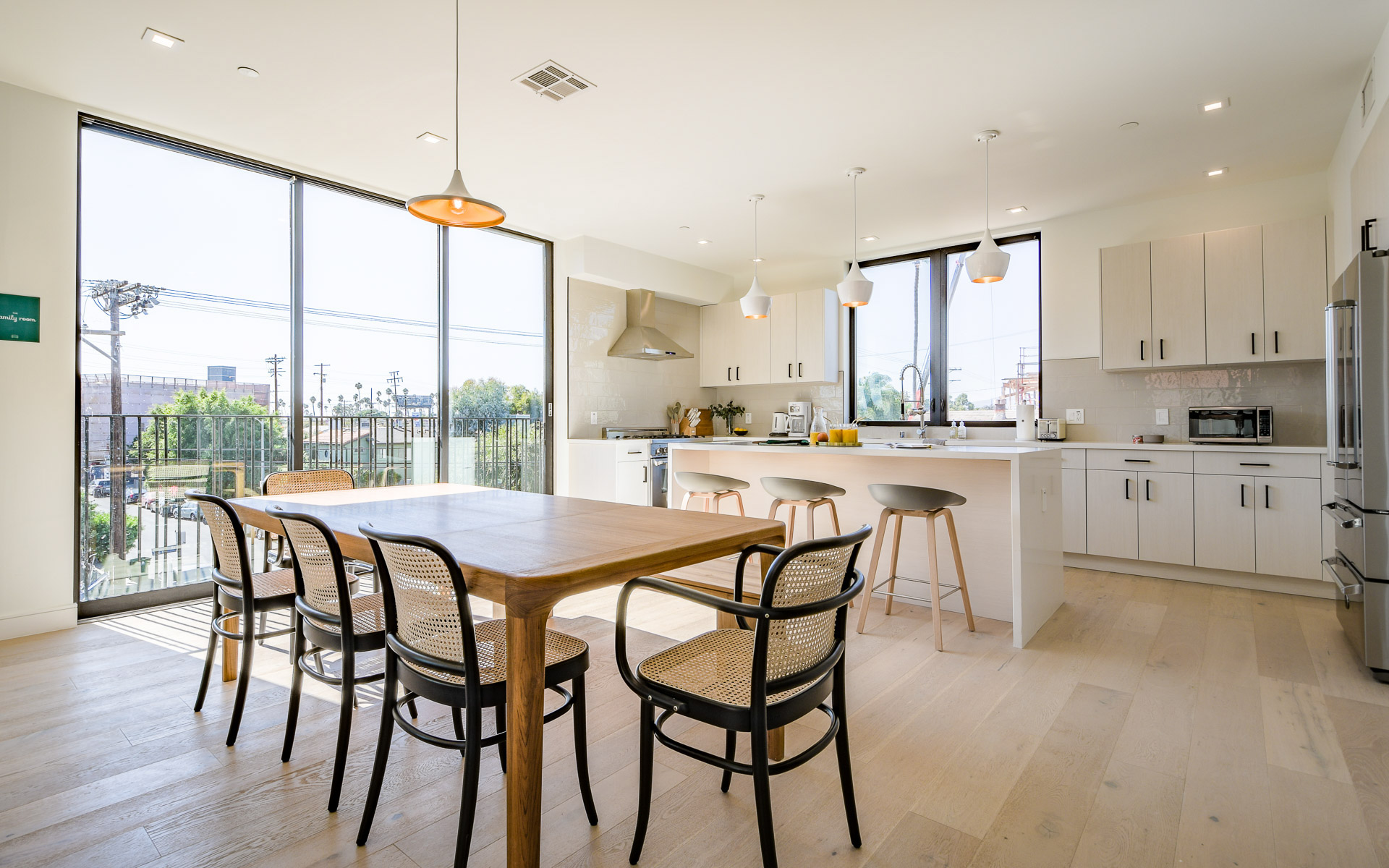Whether you’re considering moving into a loft vs apartment, many factors can come into play when hunting for an apartment—from market availability to your credit history—but timing can also make a major impact on your search. Maybe your lease at your current locale hasn’t quite expired, or you’re unable to move into the new place right on the first of the month. Whatever the reason, when desirable apartments come on the market, they don’t always stick around for long. That means you’ll need to act fast if you want to secure your top choice.
Fortunately, acting fast doesn’t have to mean cutting your losses and paying for rent on a rental property when you don’t actually live there. In many cases, your landlord may be willing to accept what’s called prorated rent.
Essentially, prorated rent means only paying rent for the days you actually live in a rental unit. But there’s still more to unpack—keep reading for a complete overview.

Prorated rent explained
In most cases, when you move into an apartment, you pay the entire first month’s rent upfront, inaugurating a trend of paying entire month’s rent in advance that will continue throughout the duration of the lease. That’s just the way renting works—you pay to stay.
Your lease is usually valid through the last day of the final month. But sometimes, those first-of-the-month and end-of-the-month deadlines don’t work for all tenants. In such cases, prorated rent often comes into play. Essentially, it refers to a reduced rent total that reflects only the days a tenant physically occupies a property.1
Commonly, this happens when a tenant:
- Can’t move in on the first day of the month
- Needs to move out before the last day of the month
So, what does prorate rent mean? Is it partial rent? In reality, it means that the rent is proportionate to the number of days you actually spend living in a rental unit. So this computation applies when you move out or move in before the billing cycle or rental period ends. For example, if your lease officially begins on May 1st but you can’t move in until May 15th, your landlord may be willing to accept half of the rent collection for that first month.
Are landlords obligated to prorate your rent?
In most cases, your landlord is not obligated to prorate your rent if you need to move in late or move out early. In fact, if you’re leaving a property before the official end of your lease, your landlord may be reluctant to prorate your rent at all, unless they have another tenant waiting to move in.
That said, rent proration is far from a rarity in the world of apartment renting. In fact, many landlords know that extending this grace to tenants can work to their own benefit.2 Sure, it might mean missing out on a few days’ or a couple of weeks’ worth of rent in the short term. But in the long term, it can help landlords foster positive relationships with their tenants that can lead to:
- Long-term renters
- Fewer empty units
- Happier tenants
It’s worth keeping that in mind if you find yourself in the position of needing to ask your landlord to prorate a portion of your total rent for the current month. If your landlord agrees, be sure to get it in writing.
On the other hand, Common makes it easy to transfer your lease to another unit in our network whenever you’re ready to move—no prorated rent required.
Prorated rent collection
If you ask the Internet, you’d think that calculating your prorated rent amount involves complicated equations and a calculator made by Texas Instruments. But the truth is, there are four methods that most landlords use when arriving at a specific amount.3 The good news is that they’re all simple enough that you don’t need to be a math whiz to figure them out yourself.
To that end, let’s take a look at the common methods for calculating prorated rent.
Method #1: Calculate by year
Essentially, the first step to calculating your prorated rent payment is to determine how much rent you pay per day. If you have a year-long lease, the most accurate method for figuring out your daily rent is by looking at the full year.
Follow these steps to calculate your prorated rent using this method:
- Step 1: Figure out your total yearly rent – This is the easy part. All you have to do is multiply your monthly rent by 12. If your rent is $800 per month, you’ll pay $9,600 at the end of the 12 months.
- Step 2: Figure out your daily rent amount– Once you’ve established your yearly rent, you can divide it by the number of days in a year (365) to determine how much rent you pay per day. In our example, $9,600 divided by 365 is roughly $26.30 per day.
- Step 3: Plug the actual number of days you live there – Finally, the last factor needed for the formula is the number of days you’ll actually reside at the property. If you’re moving in on June 15th, for example, you’ll use 15, as that’s how many days are left in the month of June. At $26.30 per day, a 15-day rate would be about $394.50.
Method #2: Calculate by number of days in an average month
Your landlord may choose to calculate your prorated rent based on how many days there are in an average month. On average, there are 30.42 days in a month—that’s 365 (total days in a year) divided by 12 (total months).
Under this method, your monthly rent payment is divided by 30.42, then multiplied by the number of days you plan to live at the property that month. Our example uses $800 as the monthly rent, which is $26.29 when divided by 30.42. If you’re planning on living at the property for only 10 days, your prorated rent would be about $263.
Method #3: Calculate by number of days in a banker’s month
You can also calculate your prorated rent by using what’s known as a banker’s month. A banker’s month assumes that every month has 30 days, no exceptions. Depending on what state you live in, this may be the only option for calculating prorated rent.
Start by dividing your monthly rent ($800) by 30. Then, take that number—$26.66 in our example—and multiply it by the number of days you plan on staying in the unit. If you plan to be there for half of the month, or 15 days, your prorated rent would be almost $400, or exactly half of the monthly rent.
Method #4: Monthly rent
The final method for calculating prorated rent is to base it on the number of days in the actual month in question. For example, there are 31 days in March. To figure your prorated rent, you would simply divide your monthly rent by 31. Then, as in the previous method, you would multiply that number by the actual number of days you’ll be at the property.
In other words, if your rent is $800 per month and you’re only going to pay for 12 days in March, your prorated rent would be about $309.00
That said, the prorated price will largely be up to your landlord. Although it’s unlikely that they won’t use some sort of logic to arrive at the number, understanding how they got there can keep you from paying more than you should.
Paying prorated rent
Trickier than figuring out your prorated rent is knowing when to pay it. Do you pay it on the first of the month, like usual? Or is there a better way of going about it?
A lot of it can depend on your situation and your landlords—which is another reason having a clear and documented conversation with your landlord is so crucial. That said, in most cases, when and how you pay prorated rent will depend on whether:
- You’re moving in late – Many tenants move into a new apartment on the 15th of the month. But even if you wait, there’s a good chance you’ll still be expected to pay the full amount for the first month of your lease. If that happens, your landlord will usually accept the prorated amount the following month.
- If you’re moving out – Typically, when rent is prorated for the last month of a lease, you’ll pay it on whatever the agreed-upon due date is. If you’ve always paid your rent on the first, go ahead and do the same with your prorated rent.
Aside from the prorated rent (or rent, in general), at times you might also have to pay a security deposit before moving into a new property. What is a security deposit? To those who don’t know, it’s kind of a downpayment and serves as reassurance to not only pay for the property but also to care for it.
Experience flexible living with Common

Prorated rent can be a blessing for tenants whose schedules don’t always jive with leasing periods. But there’s a better way to rent that frees you from the stress of having to negotiate with a landlord just to make sure you’re paying a fair price.
Welcome to Common, where living in cities is easier than ever.
In cities all across the country, Common is taking communal living to a whole new level. With beautiful private rooms and stunning shared suites, we make it easy to find an apartment and a community you love. Then, we up the ante by tossing in the best amenities, like free high-speed WiFi, onsite laundry facilities, and responsive property services.
Ready to get more for your rent? Find your home with Common today.
Sources:
- RentCafe. What Is Prorated Rent and How Should You Calculate It? https://www.rentcafe.com/blog/apartmentliving/tips-tricks-renters/nitty-gritty-paying-fair-amount-prorated-rent-explained/
- RobertCWhite.com. What Is Prorated Rent? How Does it Benefit Landlords and Tenants? https://www.robertcwhite.com/what-is-prorated-rent
- MYND.com. How to Calculate Prorated Rent—Everything You Need to Know. https://www.mynd.co/knowledge-center/how-to-calculate-prorated-rent-everything-you-need-to-know

